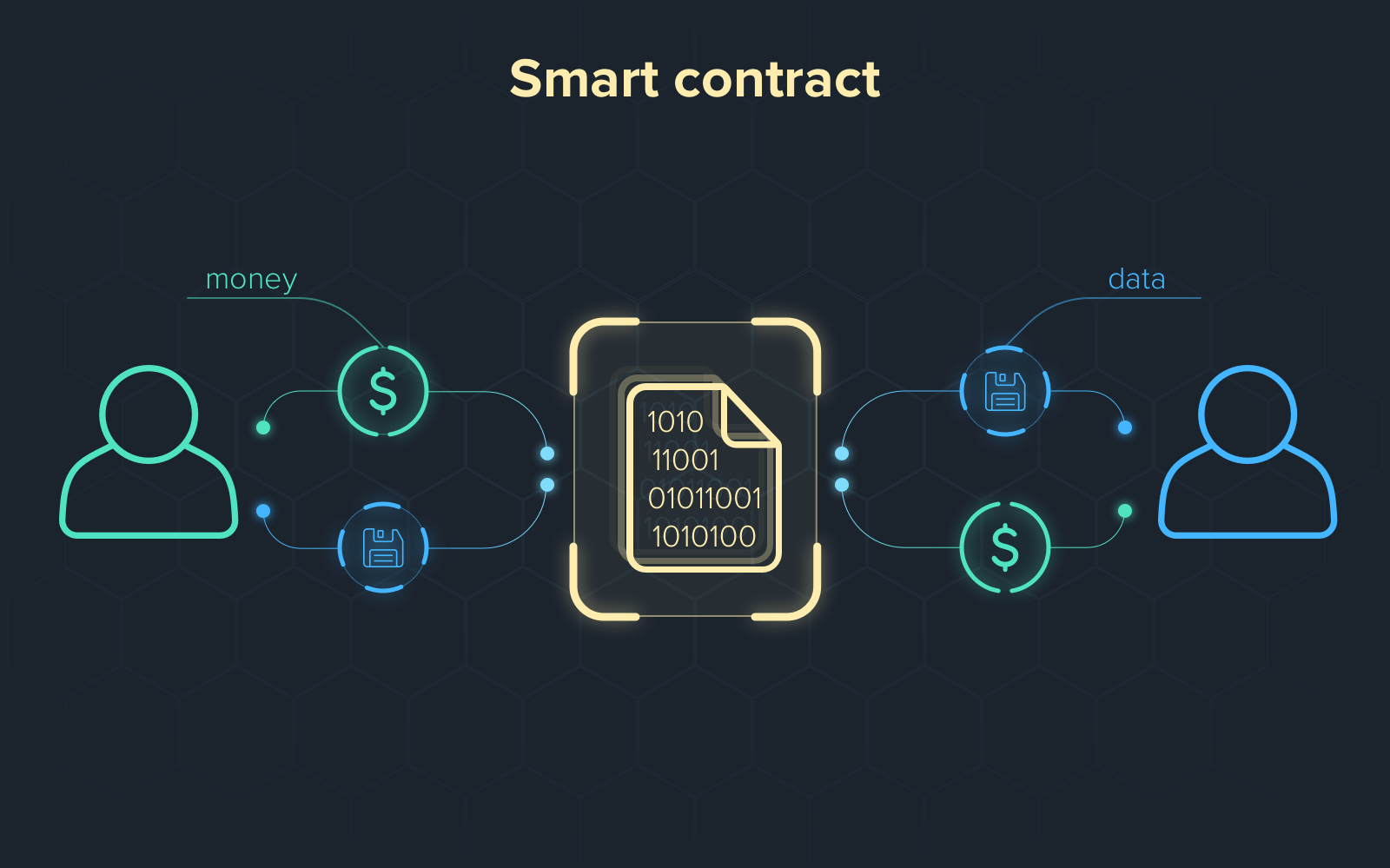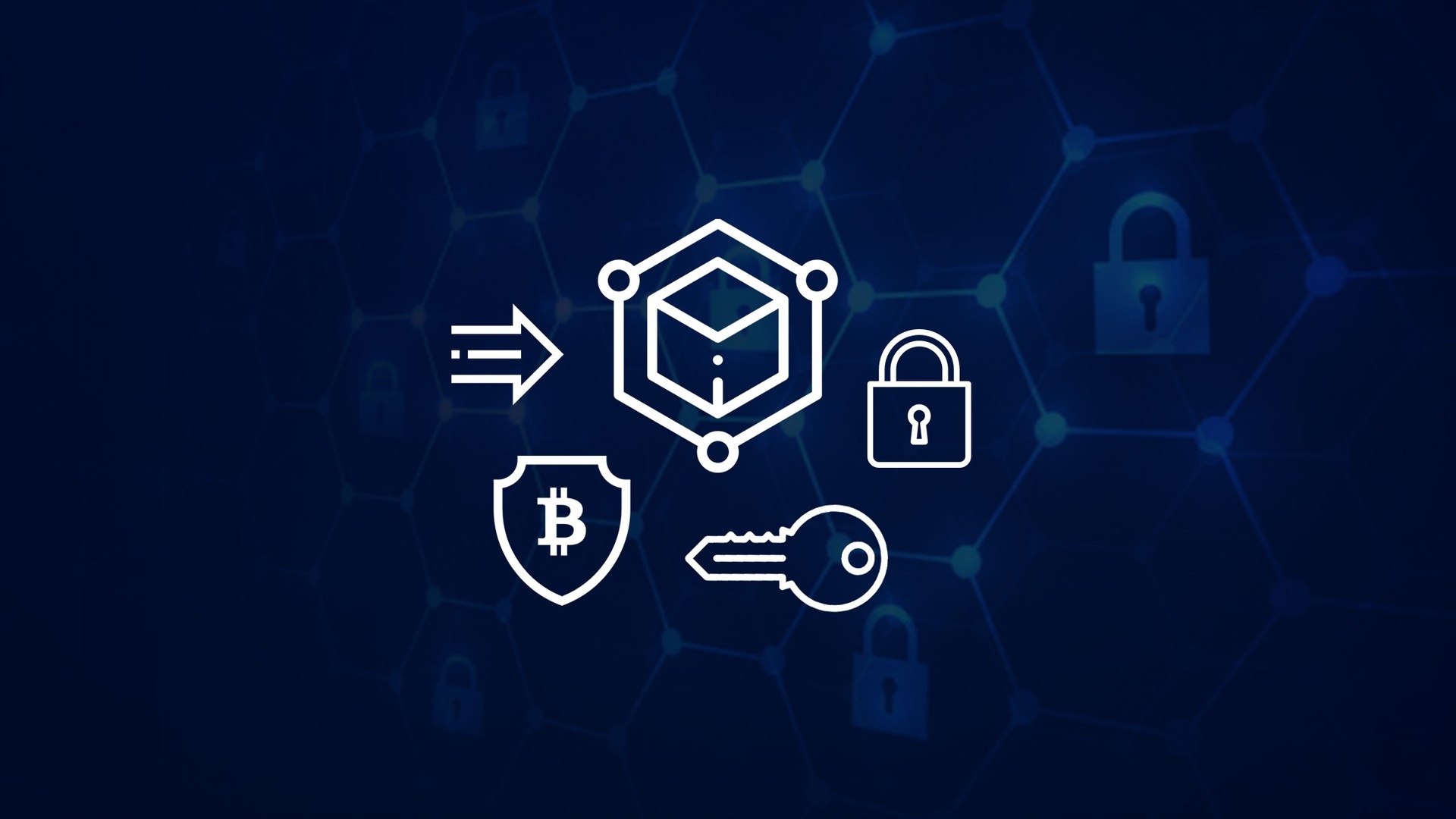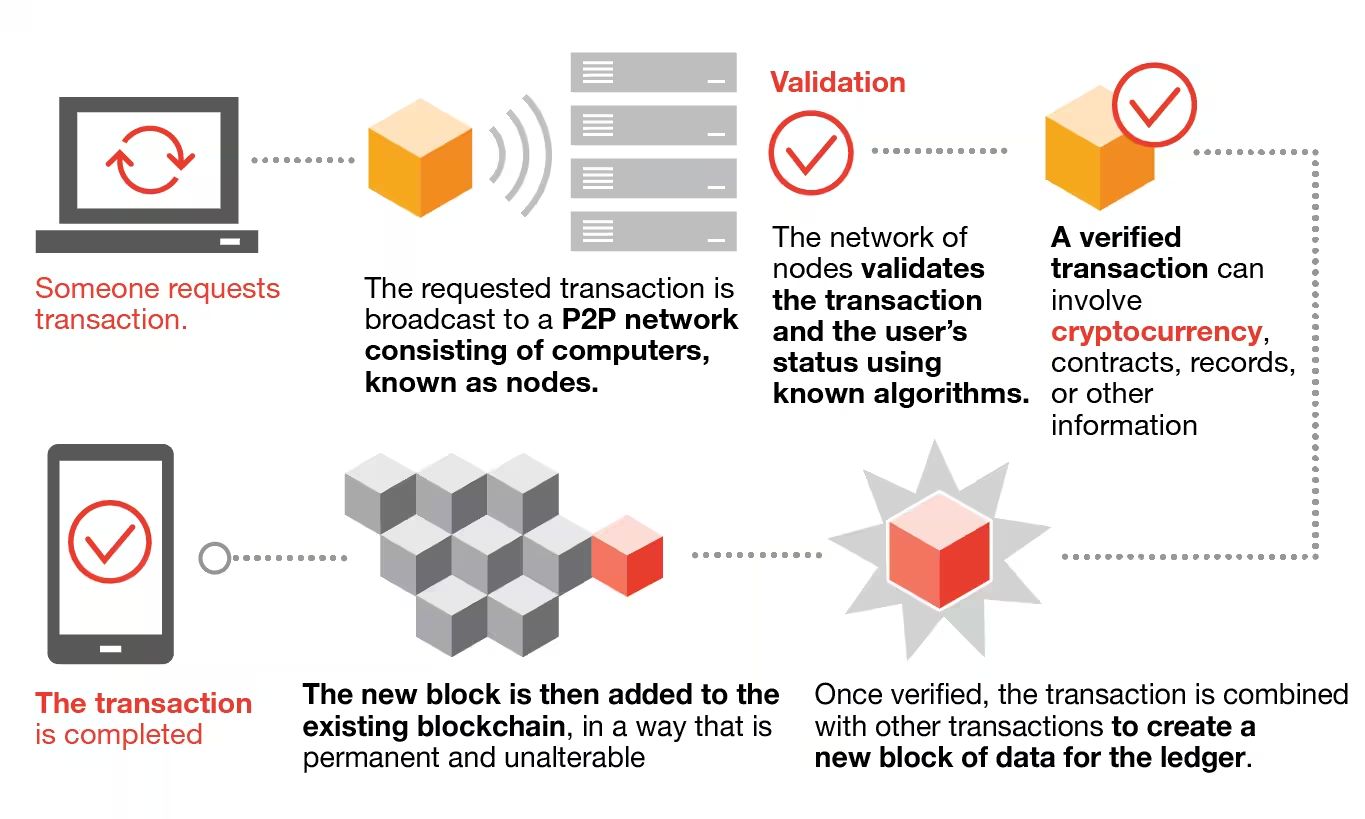Introduction
Welcome to the world of blockchain, a technology that has revolutionized various industries and has the potential to redefine how we transact and exchange information. Blockchain, most commonly associated with cryptocurrencies like Bitcoin, is a distributed ledger technology that enables secure and transparent transactions.
While public blockchains are open to anyone and operate in a decentralized manner, private blockchain networks offer a more controlled and exclusive environment for businesses and organizations. In this article, we will explore the concept of a private blockchain network and guide you through the process of creating one.
A private blockchain network, as the name suggests, is a permissioned blockchain where access is restricted to a specific group of participants. Unlike public blockchains, which allow anyone to participate in transaction validation, private blockchains are designed to be secure and accessible only to pre-approved entities.
Private blockchains offer several advantages over their public counterparts. They provide enhanced privacy and confidentiality as transaction details are only visible to authorized network participants. Private blockchain networks can also have higher transaction speeds and scalability since they are not burdened by the limitations of public blockchains that rely on consensus from a large number of nodes.
Additionally, private blockchain networks allow organizations to have greater control over the governance and regulations of their network. This enables them to tailor the network to their specific needs, ensuring compliance with industry standards and regulations.
The process of creating a private blockchain network involves several steps, from defining the purpose of the network to setting up the infrastructure and establishing consensus mechanisms. By following these steps, organizations can harness the power of blockchain technology to streamline operations, enhance security, and foster trust among participants.
In the following sections, we will delve into each step in detail and provide guidance on how to successfully create and manage a private blockchain network.
What is a Private Blockchain Network?
A private blockchain network is a decentralized ledger technology that operates within a closed ecosystem, restricting access to a select group of participants. Unlike public blockchains that are open to anyone, private blockchain networks are designed to be permissioned, ensuring that only trusted entities can participate in transaction validation and network governance.
In a private blockchain, participants are usually known, identified, and vetted before being granted access to the network. This controlled environment allows organizations to maintain a higher level of privacy and confidentiality compared to public blockchains.
Private blockchains offer a range of benefits that make them attractive for enterprise use. Firstly, they provide enhanced security, as private blockchains can implement robust access controls and encryption mechanisms to protect sensitive data. This is particularly important for organizations that deal with confidential or proprietary information.
Additionally, private blockchain networks have the advantage of higher scalability and faster transaction speeds. Since access is limited to a smaller number of participating nodes, the network can handle a greater volume of transactions without facing the scalability issues that can arise in public blockchains.
Private blockchains also offer greater control and flexibility, allowing organizations to define their own rules and regulations. Participants can establish consensus mechanisms that align with their specific requirements, ensuring that the network operates in a manner that meets their business needs and complies with industry standards. This level of control enables better governance and decision-making within the network.
Furthermore, private blockchain networks are well-suited for collaborations and consortiums, where multiple organizations come together to pursue a common goal. By using a private blockchain, these entities can securely and transparently share data and information, fostering trust and cooperation.
It is important to note that while private blockchains offer significant advantages in terms of privacy, security, and control, they may not possess the same level of decentralization and censorship resistance as public blockchains. The trade-off for enhanced privacy is a reduction in the number of participants who can validate transactions and maintain the network’s integrity.
In summary, a private blockchain network is a closed ecosystem that restricts access to pre-approved entities. It offers enhanced security, scalability, and control, making it an ideal choice for organizations seeking to leverage blockchain technology in a trusted and controlled environment.
Why Create a Private Blockchain Network?
Private blockchain networks have gained significant attention and adoption in various industries due to the unique advantages they offer over public blockchains. Let’s explore why organizations choose to create private blockchain networks:
Enhanced Privacy and Confidentiality: One of the primary reasons for creating a private blockchain network is to ensure the privacy and confidentiality of sensitive information. By restricting access to a select group of participants, organizations can maintain tighter control over data visibility and protect proprietary or confidential information.
Control and Governance: Private blockchains allow organizations to have greater control over the network’s rules and governance. Participants can define consensus mechanisms, access controls, and permissions that align with their specific requirements. This level of control enables better decision-making, regulatory compliance, and accountability within the network.
Scalability and Performance: Unlike public blockchains, which can face scalability challenges due to the large number of nodes involved, private blockchain networks can achieve higher transaction speeds and scalability. With a smaller number of nodes, the network can handle a greater volume of transactions, making private blockchains ideal for enterprise use cases that require rapid and scalable transaction processing.
Increased Security: Private blockchains offer enhanced security features compared to public blockchains. Organizations can implement robust access controls, encryption mechanisms, and identity management systems to protect sensitive data and prevent unauthorized access. The controlled nature of private blockchains reduces the risk of malicious activities and ensures the integrity and security of transactions.
Customizability: With private blockchain networks, organizations have the flexibility to tailor the network to their specific needs. They can define the purpose, rules, and functionalities of the network, enabling seamless integration with existing systems and processes. This customizability allows organizations to leverage the benefits of blockchain technology while aligning with their unique business requirements.
Collaboration and Consortia: Private blockchain networks are particularly advantageous for collaborations and consortia, where multiple organizations come together to share data and achieve common goals. By using a private blockchain, these entities can securely and transparently exchange information, streamline operations, and foster trust among participants.
Overall, private blockchain networks offer a range of benefits that make them a compelling choice for businesses and organizations. From enhanced privacy and control to scalability and increased security, private blockchains enable organizations to harness the power of blockchain technology within a trusted and controlled environment.
Step 1: Define the Purpose of the Network
Before creating a private blockchain network, it is essential to clearly define the purpose and objectives of the network. This step lays the foundation for the entire network design and ensures that it aligns with the organization’s goals and requirements.
When defining the purpose of the network, organizations should consider the specific use case they intend to address. Whether it is streamlining supply chain processes, improving data management and sharing, or enhancing transparency in financial transactions, having a clear understanding of the intended purpose will guide the design and development of the network.
Key considerations when defining the purpose of the network include:
- Identifying pain points: Identify the existing challenges and pain points within the organization that the private blockchain network aims to address. By having a clear understanding of these pain points, organizations can design a network that effectively solves the identified issues.
- Setting objectives: Define specific goals and objectives that the private blockchain network should achieve. These objectives can include improving efficiency, reducing costs, enhancing trust and transparency, or enabling seamless collaboration among participants.
- Determining stakeholders: Identify the key stakeholders who will participate in the network. These can be internal teams, suppliers, customers, or other relevant entities. Understanding the needs and expectations of these stakeholders will help shape the features and functionality of the private blockchain network.
- Considering scalability: Anticipate future growth and scalability requirements of the network. Ensure that the design and architecture of the network can accommodate increased transaction volumes and new participants without compromising performance.
- Compliance and regulatory considerations: Evaluate any regulatory or compliance requirements that may impact the design and operation of the network. Organizations must ensure that their private blockchain network adheres to the relevant regulations governing their industry.
By defining the purpose of the network early on, organizations can establish clear objectives, scope, and expectations for their private blockchain network. This clarity sets the stage for the subsequent steps and ensures that the network is built with a specific goal in mind.
Once the purpose is defined, organizations can proceed to select the appropriate blockchain platform and begin setting up the infrastructure for their private blockchain network.
Step 2: Select the Blockchain Platform
After defining the purpose of the private blockchain network, the next step is to choose the appropriate blockchain platform that aligns with the organization’s requirements. Selecting the right platform is crucial as it will determine the functionality, scalability, and ease of development for the network.
There are several blockchain platforms available in the market, each with its own unique features and capabilities. Here are some key factors to consider when selecting a blockchain platform:
- Consensus Mechanism: Evaluate the consensus mechanism supported by the blockchain platform. Popular options include Proof-of-Work (PoW), Proof-of-Stake (PoS), and Practical Byzantine Fault Tolerance (PBFT). Choose a consensus mechanism that suits the desired level of decentralization, security, and performance for your private blockchain network.
- Smart Contract Support: Determine if the blockchain platform supports the use of smart contracts. Smart contracts are self-executing agreements that automate business processes and transactions. They enable the execution of predefined actions based on predefined conditions, facilitating trust and efficiency within the network.
- Scalability and Performance: Consider the scalability and performance capabilities of the blockchain platform. Evaluate factors such as transaction speed, throughput, and the ability to handle a large volume of transactions. Scalability is particularly important for enterprise use cases that require high transaction volumes and rapid processing.
- Security Features: Assess the security features provided by the blockchain platform. Look for features such as encryption, permissioned access controls, identity management, and audit trails. These features are crucial to maintaining the integrity and confidentiality of data within the private blockchain network.
- Development Tools and Support: Examine the available development tools, software libraries, and documentation provided by the blockchain platform. A robust set of development tools can significantly ease the development process and expedite the deployment of the private blockchain network.
- Community and Adoption: Consider the strength of the platform’s community and its level of adoption. A thriving community indicates continuous support, updates, and a wealth of knowledge-sharing that can be beneficial during the development and maintenance phases of the private blockchain network.
It is crucial to thoroughly evaluate and compare different blockchain platforms based on these factors to make an informed decision. Consider engaging with experts in the field, attending conferences, and conducting research to gain insights into the strengths and weaknesses of each platform.
Some popular blockchain platforms that organizations often consider include Ethereum, Hyperledger Fabric, Corda, and Quorum. However, the optimal choice depends on the specific requirements and goals of the private blockchain network.
Once a suitable blockchain platform is selected, organizations can move on to the next step, which involves setting up the infrastructure for their private blockchain network. This includes selecting the appropriate hosting environment, configuring network nodes, and establishing the necessary network connections.
Step 3: Set Up the Network Infrastructure
Once the blockchain platform is selected, the next step in creating a private blockchain network is to set up the network infrastructure. This involves configuring the necessary hardware and software components to support the private blockchain network’s operations.
Here are the key aspects to consider when setting up the network infrastructure:
- Hosting Environment: Determine the hosting environment for your private blockchain network. You can choose between cloud-based solutions like Amazon Web Services (AWS), Microsoft Azure, or Google Cloud Platform, or opt for an on-premise infrastructure. Select the hosting environment based on factors such as scalability, security, budget, and organizational requirements.
- Network Nodes: Set up the network nodes that will be responsible for maintaining the blockchain network. Nodes can be physical machines or virtual instances deployed on the chosen hosting environment. Configure the nodes with the appropriate operating systems, network settings, and required software dependencies. Define the roles of each node, such as validating transactions or storing data.
- Network Connectivity: Establish the necessary network connections between the nodes to ensure communication and data exchange within the private blockchain network. Implement secure network protocols and firewall configurations to protect against unauthorized access and ensure the integrity of data transmission.
- Storage and Database: Determine the storage and database solutions for your private blockchain network. Depending on the blockchain platform chosen, you may need to configure relational databases, distributed file systems, or specialized databases to store the blockchain data. Ensure that the storage solutions are scalable, secure, and capable of handling the anticipated data volume.
- Monitoring and Management: Implement monitoring and management tools to track the performance, health, and activity of the private blockchain network. These tools can provide insights into network activity, transaction volumes, and node status, helping identify any issues or bottlenecks that may arise. Consider utilizing blockchain-specific monitoring tools or integrating existing infrastructure monitoring systems.
- Backup and Disaster Recovery: Establish robust backup and disaster recovery mechanisms to protect the private blockchain network and its data. Regularly back up critical data and implement disaster recovery plans to ensure business continuity in case of unforeseen events. Consider redundant network setups, data replication, and off-site backups for added resilience.
Properly setting up the network infrastructure is vital to ensure the stability, security, and performance of the private blockchain network. It lays the foundation for the subsequent steps, such as creating and configuring the network nodes, establishing consensus mechanisms, and defining access controls and permissions.
Once the network infrastructure is in place, organizations can proceed to the next steps of creating and configuring the nodes, establishing the consensus mechanism, and defining access controls and permissions within the private blockchain network.
Step 4: Create and Configure the Nodes
After setting up the network infrastructure, the next step in creating a private blockchain network is to create and configure the nodes that will participate in the network. Nodes are the individual computers or devices that maintain a copy of the blockchain ledger and validate transactions within the network.
Here’s a guide to creating and configuring the nodes:
- Node Creation: Create the necessary number of nodes according to the desired network architecture. This can be done by setting up new virtual machines or utilizing existing machines that meet the network requirements.
- Node Configuration: Configure each node with the appropriate software and dependencies required by the chosen blockchain platform. This typically involves installing the client software provided by the platform and configuring it to connect to the private blockchain network.
- Identity and Permissions: Assign identities and permissions to each node to control their access and participation in the network. This may involve generating unique cryptographic keys or digital certificates for each node and configuring access controls based on the desired level of permissions.
- Peer-to-Peer Networking: Establish connections between the nodes to enable communication and data synchronization within the private blockchain network. Configure peer-to-peer networking protocols supported by the blockchain platform to ensure seamless communication and data exchange between nodes.
- Peer Discovery: Depending on the chosen blockchain platform, set up mechanisms for nodes to discover and connect with each other. This can involve configuring network discovery protocols, maintaining peer lists, or utilizing DNS-based service discovery.
- Synchronization: Ensure that the nodes are synchronized with the latest version of the blockchain ledger. This requires downloading and validating the blockchain’s history and transaction records. Depending on the size of the blockchain, this process may take some time.
- Monitoring and Maintenance: Implement monitoring tools to track the status and performance of the nodes. Regularly monitor the nodes to ensure they are functioning properly, and promptly address any issues that may arise. Regular maintenance tasks such as updates, backups, and security patches should also be performed to keep the nodes healthy and secure.
Properly creating and configuring the nodes is crucial as they form the backbone of the private blockchain network. Each node contributes to the network’s security, integrity, and consensus mechanism, and plays a role in validating transactions and maintaining the shared ledger.
Once the nodes are created and configured, organizations can proceed to the next steps of establishing the consensus mechanism, defining access control, and permissions in the private blockchain network.
Step 5: Establish Consensus Mechanism
The establishment of a consensus mechanism is a critical step in creating a private blockchain network. Consensus mechanisms ensure that all nodes in the network agree on the validity and order of transactions, thereby maintaining the integrity and trustworthiness of the blockchain ledger. The choice of consensus mechanism depends on the desired level of decentralization, security, and performance for the private blockchain network.
Here are some commonly used consensus mechanisms:
- Proof-of-Work (PoW): This is the consensus mechanism famously used by Bitcoin. In PoW, nodes compete to solve complex mathematical problems and the first node to find a valid solution gets to add the next block to the blockchain. PoW is known for its security, as it requires significant computational power to manipulate the blockchain. However, it is energy-intensive and can result in slower transaction speeds.
- Proof-of-Stake (PoS): In PoS, the nodes’ ability to validate transactions and add blocks to the blockchain is based on the number of tokens they hold. The more tokens a node has, the higher its chances of being selected as the validator. PoS is considered more energy-efficient compared to PoW and allows for faster transaction confirmations. However, it may lead to centralization if nodes with more tokens have more influence over the network.
- Practical Byzantine Fault Tolerance (PBFT): PBFT is a consensus mechanism that focuses on the Byzantine Fault Tolerance concept. It requires a predetermined number of nodes to agree on the validity of a transaction before it is added to the blockchain. PBFT is known for its high throughput and low latency, making it suitable for private blockchain networks. However, it requires a trust assumption regarding the behavior of participating nodes.
- Delegated Proof-of-Stake (DPoS): DPoS is a variation of PoS where a smaller number of trusted nodes, known as delegates, are elected by the network participants to validate transactions and create blocks. DPoS allows for faster transaction processing and scalability while maintaining decentralization to some extent. However, it requires trust in the elected delegates.
When selecting a consensus mechanism, consider factors such as network scalability, energy efficiency, security, and the desired level of decentralization. The chosen mechanism should align with the goals, requirements, and constraints of the private blockchain network.
After deciding on the consensus mechanism, configure the nodes and network settings accordingly. This could involve adjusting parameters such as block time, block size, network difficulty, or stake requirements, depending on the chosen consensus algorithm. It is essential to test and validate the consensus mechanism’s performance and security within the private blockchain network before proceeding to the next steps.
By establishing a well-suited consensus mechanism, organizations can ensure the reliability, security, and efficiency of their private blockchain network, facilitating consensus among the participating nodes and maintaining the integrity of the shared ledger.
Step 6: Define Access Control and Permissions
In a private blockchain network, defining access control and permissions is crucial to ensure that only authorized entities can participate in the network and perform specific actions. This step allows organizations to maintain confidentiality, integrity, and compliance within their private blockchain ecosystem.
Here are important considerations for defining access control and permissions:
- Participant Identification: Identify and verify the participants who are allowed to join the private blockchain network. This can involve conducting background checks, verifying legal identities, and establishing a registration process for new participants. These measures help ensure that only trusted and authorized entities can access and interact with the network.
- Role-Based Access: Establish different roles and associated permissions within the network. Define roles such as administrators, validators, auditors, and regular participants. Each role should have specific access and authority levels, ensuring that participants can only perform actions based on their assigned roles.
- Permissions Framework: Define the permissions framework that determines what actions each participant role can perform. This can include creating and validating transactions, accessing specific data or smart contracts, and modifying network parameters. The permissions framework establishes the boundaries and restrictions for each participant, ensuring the security and integrity of the network.
- Access Control Lists: Create access control lists (ACLs) that define the specific rules and conditions for accessing various network resources. ACLs can specify which nodes or participants are allowed to execute smart contracts, read or modify certain data, or interact with specific network services. Fine-tuning ACLs ensures that only authorized actions occur within the network.
- Revocation and Suspension: Develop mechanisms for revoking or suspending participant access if necessary. This could be in response to security breaches, non-compliance, or other violations. By having revocation and suspension procedures in place, organizations can swiftly address and mitigate any threats or risks to the integrity of the network.
- Privacy Considerations: Address privacy concerns by implementing privacy-enhancing techniques such as encryption or zero-knowledge proofs. Private information stored on the blockchain or exchanged between participants should remain confidential and protected from unauthorized access.
Defining access control and permissions helps establish a secure and trusted environment within the private blockchain network. It allows organizations to fine-tune the level of access and authority for each participant, ensuring that data confidentiality and integrity are maintained, while complying with privacy regulations and industry standards.
By carefully defining access control and permissions, organizations can ensure that their private blockchain network operates in a controlled and secure manner, with participants being granted authorized access based on their roles and responsibilities.
Step 7: Test the Network
Testing the private blockchain network is an essential step to validate its functionality, performance, and security before its actual launch. Thorough testing helps identify and resolve any issues or vulnerabilities, ensuring a stable and reliable network environment.
Here are key aspects to consider when testing the private blockchain network:
- Functionality Testing: Verify that the network operates according to the defined business requirements and objectives. Test various use cases, scenarios, and transactions to ensure that the nodes, consensus mechanism, and smart contracts function as intended.
- Performance Testing: Assess the network’s performance under different loads and conditions. Measure transaction speed, throughput, and latency to ensure that the network can handle the expected volume of transactions. Perform stress testing to evaluate the network’s scalability and performance limits.
- Security Testing: Conduct security assessments to identify and mitigate any vulnerabilities or potential attack vectors within the network. Perform penetration testing, vulnerability scanning, and code reviews to uncover any weaknesses that could be exploited. Implement appropriate security measures to protect against malicious activities and ensure the confidentiality and integrity of the network.
- Usability and User Acceptance Testing: Evaluate the user experience of the network’s participants. Gather feedback and insights from users to assess their satisfaction, usability, and any improvements needed. This testing helps ensure that the network’s interface and functionalities are intuitive and align with users’ expectations.
- Interoperability Testing: If the private blockchain network needs to interact with external systems or networks, conduct interoperability testing. Ensure that data can be seamlessly exchanged, and transactions can be processed between the private blockchain network and other relevant systems or blockchains.
- Documentation and Training: Prepare thorough documentation and provide training materials to help stakeholders, users, and developers understand the network’s features, functionalities, and operation. Clear and comprehensive documentation is essential for maintaining and supporting the network in the long term.
By comprehensively testing the private blockchain network, organizations can identify and address any issues or vulnerabilities, ensuring a robust, secure, and efficient network. It is essential to allocate sufficient time and resources for testing to minimize the likelihood of problems arising after the network is deployed.
Once the network passes all the necessary tests and meets the performance and security requirements, organizations are ready to proceed to the final step of launching and managing the private blockchain network.
Step 8: Launch and Manage the Network
The final step in creating a private blockchain network is to launch and manage the network in a production environment. This step involves deploying the network, onboarding participants, and implementing effective management strategies for ongoing maintenance and optimization.
Here are key considerations for launching and managing the private blockchain network:
- Deployment: Deploy the private blockchain network on the chosen hosting environment, whether it be cloud-based or on-premise. Ensure that all network nodes are properly configured and connected, and that the necessary security measures are in place, such as firewall rules and access controls.
- Participant Onboarding: Onboard the authorized participants onto the network. Educate them on how to connect to the network, interact with smart contracts, and perform their assigned roles and responsibilities. Provide training and support to facilitate smooth onboarding and adoption.
- Network Governance: Establish governance processes and mechanisms for decision-making, consensus upgrades, and network rule modifications. Define guidelines for network management, including procedures for adding or removing nodes, upgrading software versions, and managing any network disputes or conflicts that may arise.
- Monitoring and Maintenance: Implement continuous monitoring of the network to identify issues or anomalies. Regularly update and patch network components as needed to address security vulnerabilities or incorporate new features. Perform periodic audits to ensure compliance with regulatory requirements and maintain the network’s health and performance.
- Security and Backup: Maintain a robust security posture by implementing security best practices and protocols. Regularly back up data and ensure disaster recovery procedures are in place. Implement incident response and mitigation strategies to address any security breaches or threats that may occur.
- Network Upgrades: Stay informed about updates and new releases of the chosen blockchain platform. Assess the impact of these updates and perform thorough testing before implementing upgrades or new features to avoid disrupting the network’s functionality.
- Community Engagement: Foster a community of participants by encouraging collaboration, knowledge sharing, and continuous improvement. Provide forums, documentation, and support channels for participants to interact, ask questions, and contribute to the growth and development of the network ecosystem.
Launching and managing a private blockchain network requires ongoing dedication and attention. Organizations need to regularly assess and refine the network based on changing business requirements and emerging technologies. By effectively managing the network, organizations can leverage the benefits of blockchain technology and achieve their intended objectives.
Remember, the management of the private blockchain network is an iterative process. Continuously evaluate the network’s performance, security, and scalability to ensure that it remains an effective solution for the organization’s needs, and be prepared to adapt and evolve as the technology landscape evolves.
Conclusion
Creating a private blockchain network requires careful planning, consideration, and implementation. By following the step-by-step process outlined in this guide, organizations can successfully harness the power of blockchain technology within a controlled and secure environment.
We started by defining the purpose of the network, ensuring that it aligns with the organization’s goals and objectives. Selecting the right blockchain platform, such as Ethereum, Hyperledger Fabric, or Corda, is crucial to meet specific requirements and achieve desired functionalities.
Setting up the network infrastructure, creating and configuring the nodes, and establishing a consensus mechanism help build a strong foundation for the private blockchain network. Defining access control, permissions, and implementing privacy measures ensure the network’s security and integrity.
Thoroughly testing the network validates its functionality, performance, and security, providing assurance that it is ready for production. Finally, launching and managing the network involve deploying, onboarding participants, monitoring, and maintaining the network to ensure its smooth operation.
However, building a private blockchain network is not a one-time endeavor. It requires ongoing maintenance, upgrades, and adaptation to evolving needs and technological advancements. Organizations should stay proactive, engage with the network’s participants and community, and continuously assess and optimize the network to ensure its long-term success.
By creating and managing a private blockchain network effectively, organizations can benefit from increased security, privacy, control, and collaboration among trusted participants. These advantages can streamline operations, facilitate trust, and introduce new business opportunities within industries ranging from supply chain management to finance.
As organizations navigate the landscape of blockchain technology, this guide serves as a roadmap to help them successfully create and manage their private blockchain network and realize the potential of this transformative technology.

























